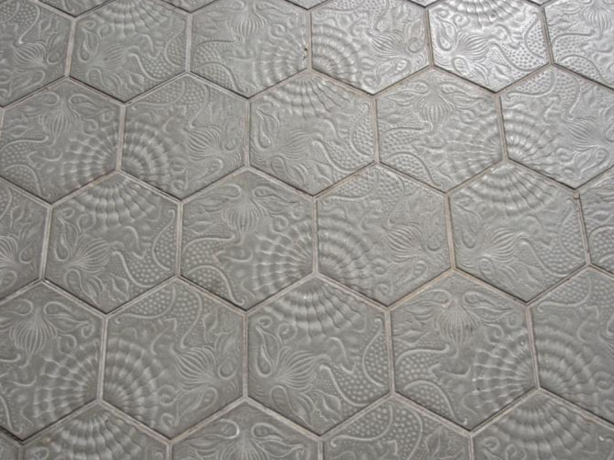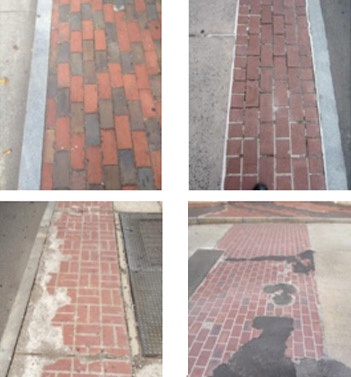When there is a need to separate pedestrians from fall hazards or to keep them out of a particular area, some type of railing or fence is required. While code requirements for height and maximum sizes of openings are something to keep in mind when selecting pedestrian railings, they should not lead us to specifying the same solutions over and over. While the ‘Ribbon’ railing might not meet the 4” sphere test here in the US it is certainly an example of a creative take on the ‘wrought iron’ fence. As a separator it might be fine, but could be tweaked if it needed to function as a fall barrier.
 Photos by Paul S. Butkus
Photos by Paul S. Butkus
The ‘Woven’ fence uses economical flat bar sock attached to a perimeter frame similar to other typical ‘ornamental’ railing products. Keeping the thickness of the bar stock to reasonable dimension will facilitate the weaving of the material without the need to mechanically crimp the slats, which would drive up the cost greatly. The frequency, size and spacing of the elements can be adjusted to provide as much visual opacity as the situation calls for.
A long used technique for creating fencing has been casting metal. Casting, as opposed to hammering and shaping wrought iron bars allowed for the mass production of decorative elements at a reduced cost. It also facilitated the creation of decorative designs that would have been impossible with wrought techniques. Cast iron was the favorite since it is a relatively inexpensive raw material that allows a lot of detail to be incorporated into the final design. Aluminum has more recently been utilized for ornamental panels and even outdoor furniture. Its lighter weight reduces shipping costs and it doesn’t rust but at the expense of a higher material cost. We are most familiar with the cast iron fences found in front of many Victorian residences here in the United States but the material and technology deserves modern attention. With the advent of more user friendly modeling software and 3D printers, it should be much easier and economical to create uniquely designed, modern fencing using traditional materials in new ways.






